
Desidae is a family of spiders, some of which are known as intertidal spiders. The family is named for the genus Desis, members of which live in a very unusual location — between the tides. The family has been reevaluated in recent years and now includes inland genera and species as well, such as Badumna and Phryganoporus. In 2017, the family Amphinectidae was merged into Desidae. The family Toxopidae has been separated off. Those intertidal spiders that are truly marine commonly live in barnacle shells, which they seal up with silk; this allows them to maintain an air bubble during high tide. They emerge at night to feed on various small arthropods that live in the intertidal zone.

Orb-weaver spiders are members of the spider family Araneidae. They are the most common group of builders of spiral wheel-shaped webs often found in gardens, fields, and forests. The English word "orb" can mean "circular", hence the English name of the group. Araneids have eight similar eyes, hairy or spiny legs, and no stridulating organs.
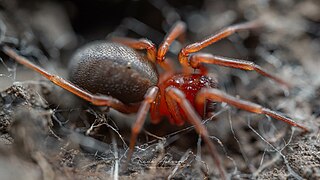
Periegops is a genus of spiders with six eyes instead of the usual eight. It is the only genus in its family (Periegopidae) and has three described species. It was long considered to be a member of Sicariidae or Segestriidae until Raymond Forster elevated it to the family level in 1995.

Orsolobidae is a six-eyed spider family with about 180 described species in thirty genera. It was first described by J. A. L. Cooke in 1965, and was raised to family status from "Dysderidae" in 1985.

Stiphidiidae, also called sheetweb spiders, is a family of araneomorph spiders first described in 1917. Most species are medium size and speckled brown with long legs. All members of this family occur in New Zealand and Australia except for Asmea. They build a horizontal sheet-like web under rocks, hence the name "sheetweb spiders".

Trite planiceps, commonly known as the black-headed jumping spider, is a common jumping spider (Salticidae) endemic to New Zealand and one of about 150 species of jumping spiders in New Zealand.

Cambridgea is a spider genus in the family Desidae and some of the first endemic spiders described from New Zealand. They are known for constructing large horizontal sheet webs measuring up to a square metre in larger species. Cambridgea were originally assigned to the Agelenidae by Dalmas in 1917 but were reassigned to the Stiphidiidae in 1973. Most recently, both Cambridgea and sister genus Nanocambridgea were reassigned to the Desidae, subfamily Porteriinae on the basis of molecular evidence.
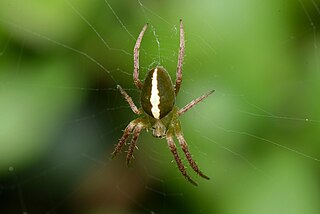
Colaranea is a genus of orb-weaver spiders first described by D. J. Court & Raymond Robert Forster in 1988 that are endemic to New Zealand.
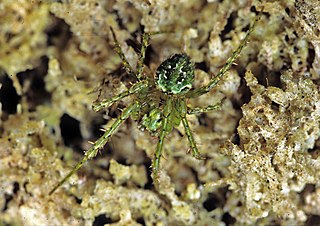
Cryptaranea is a genus of South Pacific orb-weaver spiders first described by D. J. Court & Raymond Robert Forster in 1988.

Novakiella is a genus of South Pacific orb-weaver spiders containing the single species, Novakiella trituberculosa that has only been found in Australia and New Zealand.
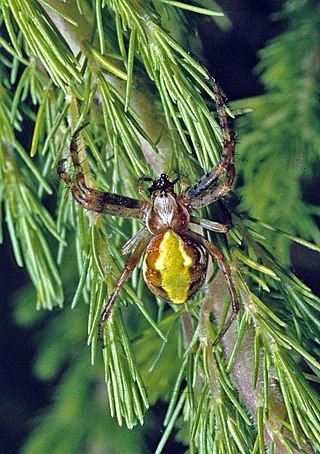
Novaranea is a genus of South Pacific orb-weaver spiders first described by D. J. Court and Raymond Robert Forster in 1988. As of April 2019, it contains only two species.
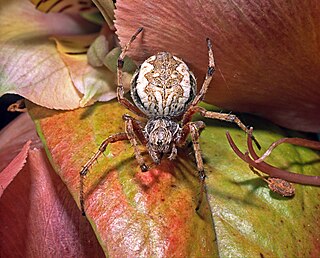
Zealaranea is a genus of orb-weaver spiders first described by D. J. Court & Raymond Robert Forster in 1988.

Toxopidae is a small family of araneomorph spiders, first described in 1940. For many years it was sunk into Desidae as a subfamily, although doubts were expressed as to whether this was correct. A large-scale molecular phylogenetic study in 2016 led to the family being revived.

Colaranea melanoviridis is a species of orb-weaver spider that is endemic to New Zealand.

Acroaspis decorosa is a species of orbweaver spider that is endemic to New Zealand.
Cantuaria orepukiensis is a species of trapdoor spider endemic to New Zealand.
Cantuaria vellosa is a species of trapdoor spider endemic to New Zealand.

Stanwellia hollowayi is a species of Mygalomorph spider endemic to New Zealand.

Migas borealis is a species of Mygalomorph spider endemic to New Zealand.
Migas toddae is a species of Mygalomorph spider endemic to New Zealand.

















